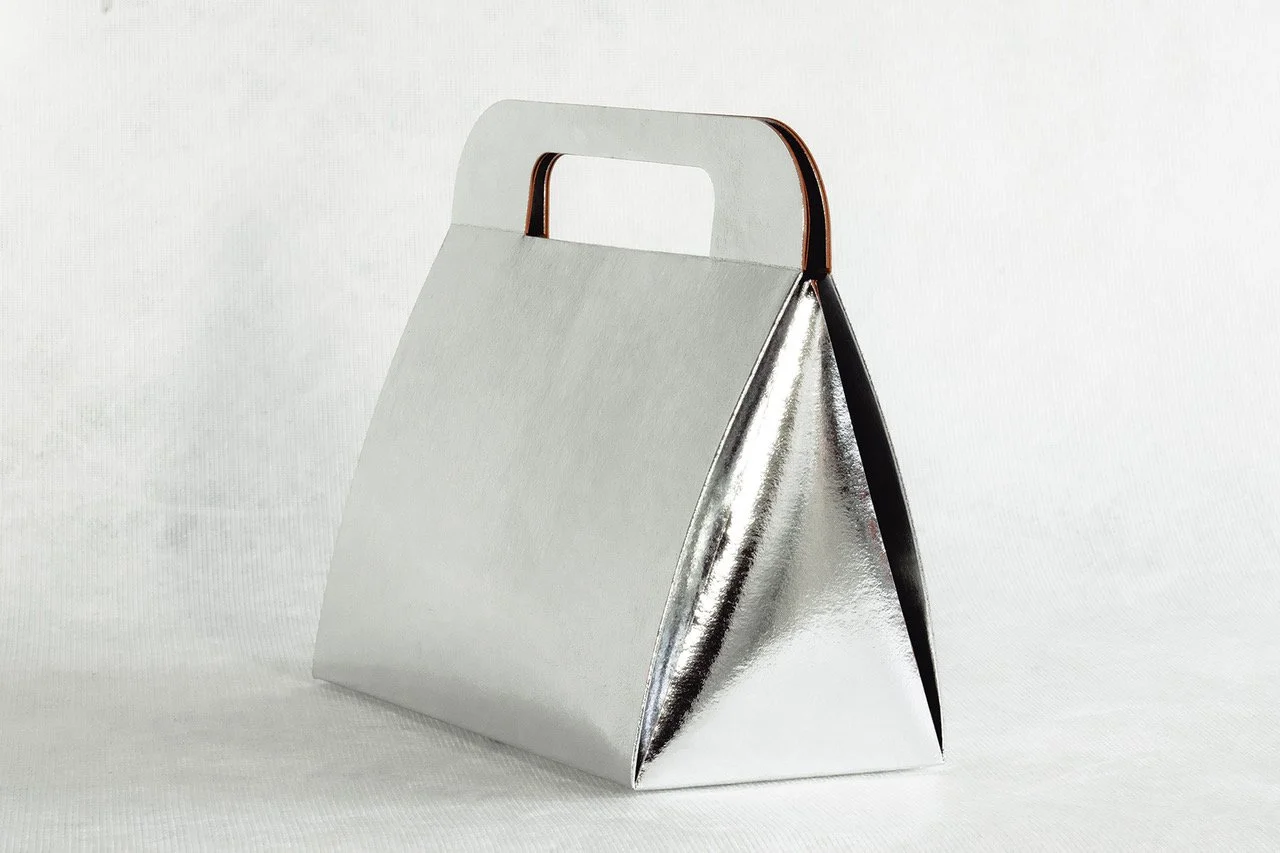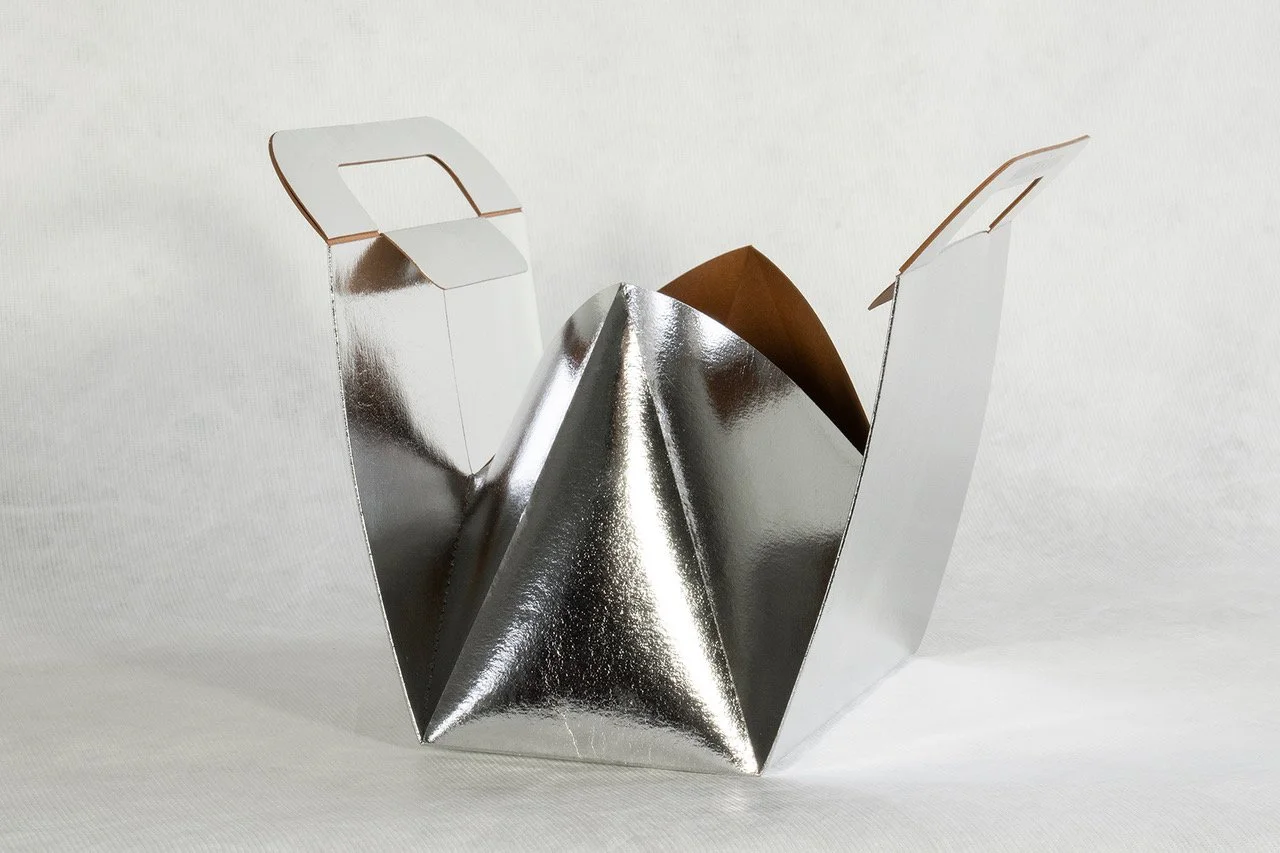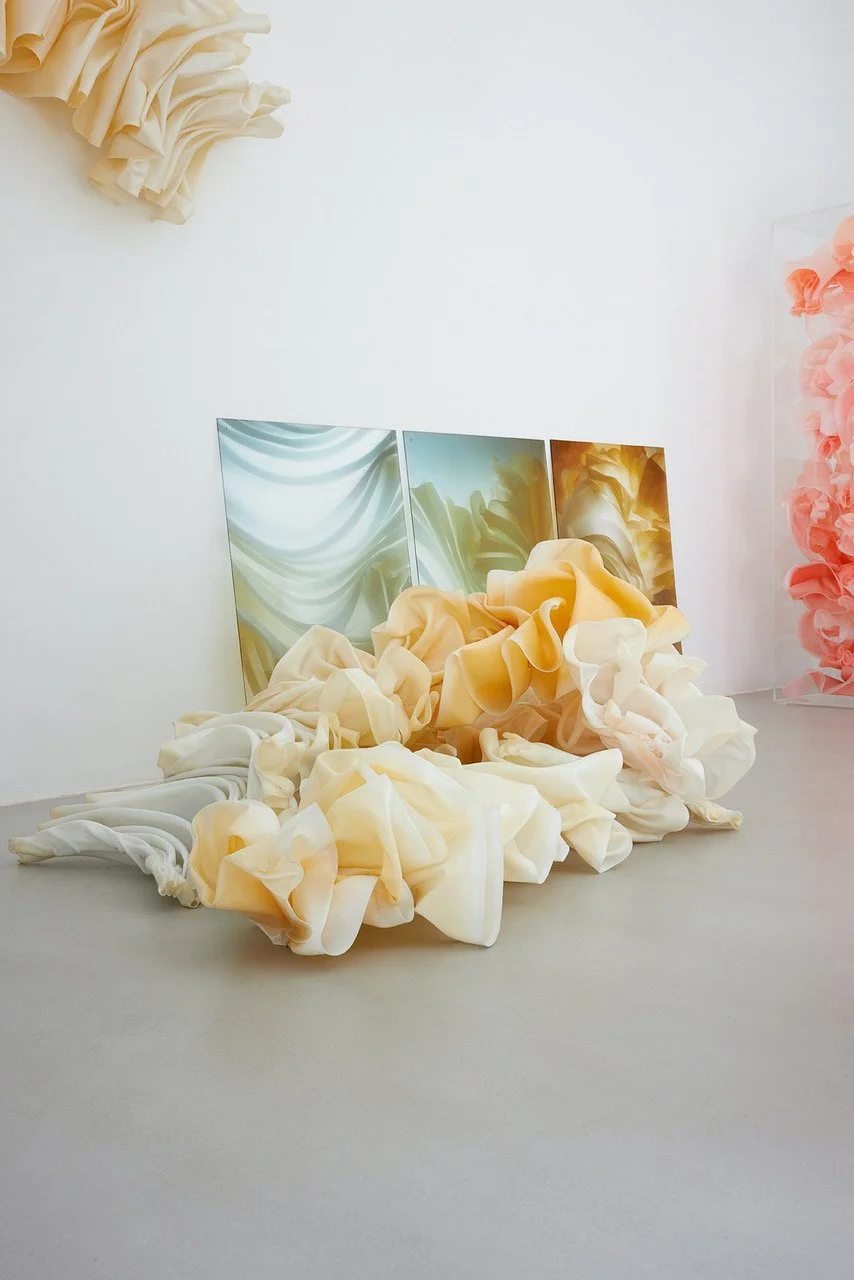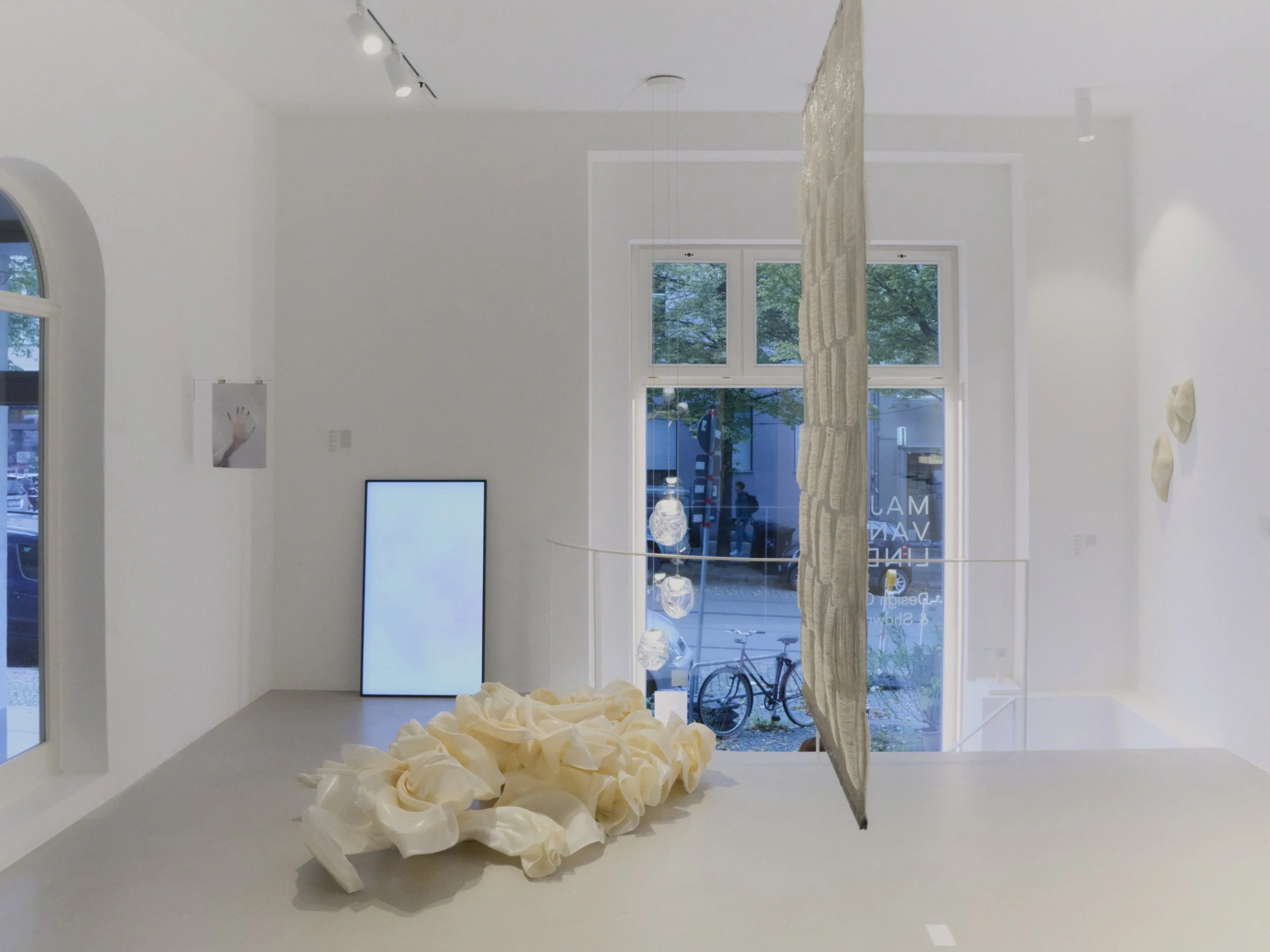Marlies von Soden
Marlies von Soden:
Marlies von Soden is a Berlin-based artist. Originally trained in costume and stage design, she spent over thirty years in film and theatre before discovering a new creative medium. Her pieces have been exhibited internationally and are held in collections such as the Württemberg State Museum in Stuttgart and the Robert Wilson Design Museum in New York.
Her signature technique involves using an extruder to push molten polypropylene, which she shapes, folds, and cuts in real time -capturing fluid, organic forms before the plastic cools and solidifies.
#1 Could you tell us something about the work Honeymoon, which we are presenting in our exhibition Sensing Space at Galerie Maj van der Linden?
Honeymoon is a free-form piece that I created from heated plastic film. I work with a flat film extruder — a technical device commonly used in industrial production processes. From its flat film die, the 200-degree-hot material emerges. I receive the polypropylene form like a midwife, then shape and guide the mass, organizing its spontaneous form until the plastic cools and solidifies.
#2 Could you describe the process of creating these works—how do you transform such an industrial material into something that carries softness, depth, and tactile qualities?
My work begins with adjusting the lip opening of the extruder – it determines how much material is released. Then I calibrate the temperature zones, from feed to melt to the outlet area. At the same time, I regulate the extrusion speed so that material flow, consistency, and form interact in an optimal way – creating the softness, depth, and tactile quality of the piece. The process of creating the sculpture is a dialogue between planning and unpredictability.
#3 Your works with polypropylene and pigment often appear almost textile-like, though they are made of plastic. What first drew you to this material, and how did you begin experimenting with it?
As a costume designer, I worked with textiles and unusual materials. Then, 35 years ago, I found a “waste cake” made of polypropylene at a landfill — a beauty! The material looked like pleated silk. My research revealed that this so-called frost line is created during the start-up and cleaning processes of extrusion machines.
#4 You recently designed a handbag, the SPACEY/clutch, made of rubber and textile. At first glance, it’s not immediately clear what material it is, nor that it is sustainable. Could you tell us more about this piece?
The SPACEY/clutch is a play on illusion and transformation. What appears to shine like metal or coated leather is actually Texipap – a vegan hybrid material made from cellulose and latex, at once lightweight, durable, and washable. Through its foldable geometry, the bag shifts between sculpture and function, between accessory and object.


© Ahmad Azaar
#5 In your work Goldrausch, which is structured like a mobile, you give the material a fragility one would not immediately associate with it. What did the process look like?
I was fascinated by the idea of setting the fragile gold leaf into a state of dance or flight – as a poetic architecture of light and movement.
#6 Is there a material you have always wanted to explore but haven’t yet worked with? What draws you to it?
I am waiting for a bioplastic material still in development, made from lactic acid filaments derived from corn. I am interested in exploring how this material can be shaped in a way similar to polypropylene, while at the same time originating from a sustainable cycle.
#7 How does your environment influence your work?
The environment is everything. I do not design in a vacuum. My work begins with listening – to the place, its light, its sounds, its materials, and its history.
Honeymoon © Malte Oing
#8 How do you see the role of an architect in today's society?
We need spaces that reconnect people with themselves and with nature. Architecture should capture silence and light. In a world full of noise, speed, and consumption, it is our responsibility to create places that invite contemplation. I believe that architecture is a medium capable of conveying a spiritual quality.
#9 Three things that inspire you at the moment?
AI, volcanic landscapes, and wabi-sabi — they represent three poles of my artistic thinking: the artificial, the archaic, and the ephemeral.
#10 What do you currently read, watch, listen to?
The Way of the White Cloud / Bhagwan Shree Rajneesh, The Wave: Ecstatic Dance with Gabrielle Roth, Sound of the Sea
Honeymoon © Malte Oing
Links
Instagram: @marlies_von_soden
Website: www.marliesvonsoden.com
Photo Credits: © Marlies von Soden, © Malte Oing, © Ahmad Azaar
Interview by Caroline Steffen




